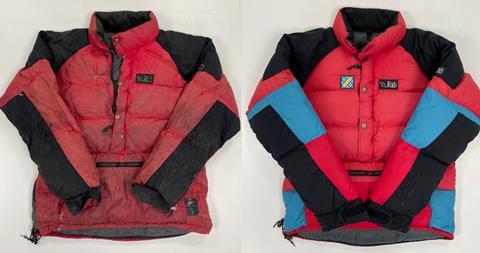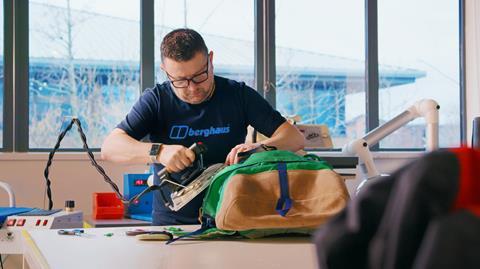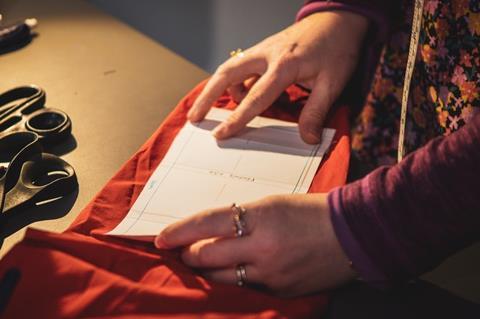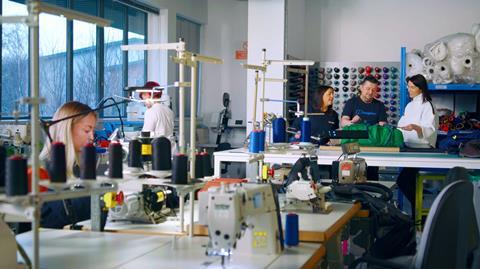The impact of inflation and supply chain disruptions currently affecting European markets, coupled with rising concerns for the environment, have all meant repair has become a hot topic across a multitude of industries.
Increasingly, consumers are expecting repair services, they are looking for repairability, and they are purchasing repaired goods too. But in the sporting goods and outdoor industries, there are numerous challenges that brands have to overcome to keep up with this rising demand. Will Renwick has more.

Consumer surveys prove it: Businesses need to embrace repair
Purchased consumer goods account for 10 percent of the total emissions on average in a person’s lifetime and, in the clothing industry as a whole, the equivalent of a rubbish truck full of clothes is burnt or buried in a landfill every second. It’s now widely accepted that markets need to move away from their longstanding linear systems and find alternatives to reduce production and waste. Repair is one part of the solution.
In fact, repair is one of the best ways for consumers to lower their footprint. Studies show that if a garment can be used for just nine additional months, it saves 20 to 30 percent of CO2 emissions, waste and water consumption compared to buying a new piece.
Business should take note, too: The environmental impact of a product now forms a large part of the buying decision for many consumers. According to a 2020 survey from McKinsey & Co, 66 percent of all respondents and 75 percent of millennial respondents said that they consider sustainability when they make a purchase. In the outdoor industry, that number is higher, with 87 percent of outdoor consumers said to consider sustainability when purchasing a product.
Alongside this, the rising cost of living means consumers are keen to save money. A recent study carried out by the Institute of Practitioners in Advertising found that out of 2,000 people surveyed, a total of 57 percent stated that they plan to repair more themselves due to economic pressures. 55 percent also said that they intend to buy items from second-hand shops, and 49 percent said that they intend to buy items from a resale platform, such as Vinted.
Not a subscriber yet?
Dive deeper into the sporting goods industry with the latest insights and stories – straight to your inbox!
If the environmental impact and consumer demand aren’t reason enough to build in repair to a product or business model, regulations from the European Parliament are encouraging repair too. In March, the European Commission adopted a new proposal on common rules promoting the repair of goods. This will ensure that more products are repaired within the legal guarantee and that consumers have easier and cheaper options to repair products that are technically repairable when the legal guarantee has expired or when the product is not functional anymore as a result of wear and tear.
But while repair might be on the rise, there are undeniably some challenges for brands that are yet to adapt, particularly those that deal in technical sporting or outdoor goods.

The business barriers to offering repairs
The main problems with offering repair stem from the fact that the majority of products in the sporting goods industry originate from southeast Asia. Even if a company has in-house product designers, in most cases, they will have had little part in the manufacturing process. They also might not have the skill set to repair products themselves.
Sending something like a jacket back to a third-party manufacturer overseas to make repairs can be complex, long, and expensive logistically. Likewise, technical sporting goods and outdoor gear can often consist of a variety of very specific components and materials, and these will often be in the hands of a southeast Asia-based manufacturer and difficult to source.
To get around this issue, brands can set up their own in-house repair services but this can be equally complex and costly. Firstly, in regard to labor, the repair of technical sporting goods often requires specific skills and a vast degree of experience. Finding qualified seamsters and seamstresses can be difficult and costly.

In our article, Repairs: Old knowledge and future challenges, Arthur Kudelka, Lowa Head of Service, said that it takes a full year of training for a newly hired worker to be capable of all the steps needed for the re-sole of a shoe, even if they bring with them shoe making knowledge. “Making a shoe is a totally different story from repairing a used shoe,” he explained, and once an employee is trained and working, Lowa tries to hold on to him or her for as long as possible – “until retirement, ideally.”
Then there are the costs associated with the logistics of in-house product repair. Typically, vendors will aim to hold onto their stock for as little time as possible. Taking stock back for repair requires extra floor space and administration. For brands, balancing these costs with the prices charged for repairs can be challenging while ensuring the service remains financially viable.
Companies making repairs work
Even with these challenges, there are numerous instances of brands that are making repair services work. Patagonia is one of the leading examples globally. In the UK, companies like Berghaus, Alpkit and Rab have also, for instance, been repairing outdoor goods for many years now. Across the water in Germany, Jack Wolfskin has had a warehouse in Hamburg for the last 15 years, with a team of 15 people responsible for 10,000 repairs last year.
Sporting goods business can offer repair: A success case study
Matt Clarke, Head of Customer Experience at Equip (Rab & Lowe Alpine)
“Over the last 40 years, we have refined and developed our repair and wash services to the point where we are now; with everything sitting under the Service Centre banner, including our warranty, Rab Promise.
Our in-house Service Centers employ some of the most skilled people in the industry. Today you’ll still find some of the original people who worked with Rab Carrington in Sheffield at the core of our Rab Service Centers.
The response to our Repair Services has always been very positive, but since the opening of service centers around the globe (Netherlands, USA and Canada, and Norway to follow soon), we have seen a tremendous uptake. In 2022, we extended the life of over 15,000 products through our wash, clean and repair service, 13,000 items in 2021 and 6,800 items in 2020.
We do get asked why we do not offer our services for free. Ultimately it is a question of resources and keeping the service as good as it can possibly be. Yes, we could do a poorer job and offer the service for free, but we want people to keep returning to Rab Service Centre safe in the knowledge that whatever they send back to us won’t let them down, is long-lasting and that they can continue to be proud of what they are wearing.”
Are third party solutions a good way to offer repairs?
Alongside its highly publicized Worn Wear Tour, which involves a team of skilled technicians traveling to various locations to offer free repairs on a wide range of outdoor gear, Patagonia has for some time offered in-store fixes for minor product issues and has also carried out more complex servicing at Repair Centers situated at its distribution warehouses. Things are changing, however, with the California brand now switching to a third-party approach to product repair.
The company has been actively involved in the foundation of a new initiative called the United Repair Centre. Situated in Amsterdam, any brand is able to partner with this organization to make use of its repair specialists, its reserves of technical materials and components, and its logistics services too.
This third-party approach helps those brands that aren’t able to overcome the workforce, materials supply and logistical challenges that brands face with the in-house repair. And more of these third-party centers are starting to pop up across Europe.
One such example is the Snowdonia Gear Repair center in Llanberis, North Wales. Rosanna Watson founded the business in 2021 when she realized that her background in engineering, paired with her love of sewing, provided the perfect ingredients for a repair shop in an area where she says the demand for the service “became clearly obvious.” Her business is a member of a collective known as Re-Action, which works to implement circular models to reduce waste and carbon emissions, and as part of this, she now works on repairs for brands including Fjallraven, Cotopaxi and Mountain Equipment.
“As a third-party repairer, it’s easier to scale and batch jobs as we have a range of work from multiple brands,” says Watson. “We also often do work which is beyond the remit of a brand, including repairing vintage backpacks which are 20+ years old and making alterations and customizations.”

Desire for repair creating a “feedback loop to design departments”
The other option for brands is to make products that are designed specifically so that they can be repaired more easily in-house. This, as Watson points out, is starting to become more commonplace. “As popularity for repairs increases, we’re seeing a feedback loop forming to design departments,” she explains. “So eventually, gear should get easier to repair.”
But making gear easier to repair, she believes, will require a move away from the constant drive towards lightweight gear. “It means thinner fabrics, reduced seam allowances and smaller hardwear, all of which reduce longevity and make items harder to repair. Bonded seams also present their own challenges and are becoming more commonplace on all gear, even non-waterproof items.”
It’s highly likely that the growth of this move towards repairability in design will also be sped up by the introduction of the European Union’s Extended Producer Responsibility legislation which will make manufacturers more responsible for the post-purchase lifespan of their products, thus incentivizing them to make products that will last longer. “Mass consumerism isn’t going to make money like it used to,” says Watson. “I think anyone with an eye on the future is going to see that soon.”
Repairs: Knowledge is power
Finally, what’s perhaps the most environmentally sound approach for brands to take is to assist consumers in their right to repair, not just by designing their products to be easier to repair post-purchase but also giving customers all the information they need for this too.
Again, Patagonia has been active in this, producing a series of DIY repair tutorials. Arc’teryx, Deuter and Vaude have also produced similar guides while, more recently, camping gear manufacturer, Exped, has published a series of free videos explaining how to repair punctures and replace valves on camping mats.
Ultimately, true stewardship necessitates not only products that are designed for repair but also the knowledge and tools to mend. Progress will inevitably happen if brands can help to pass their expertise on to consumers.
As the curtain falls on a world tuned into disposability, the rise of repair is a clarion call for learning, collaboration, innovation and a collective commitment to crafting a planet-friendly legacy.
-> Want to know more? Check out our Re:Thinking Business Special.





